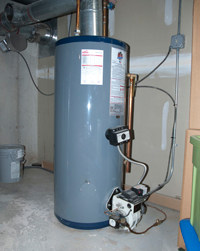They are making a number of good points on What Kind of Maintenance Do Water Heaters Need? as a whole in this post below.

Warm water is essential for everyday comfort, whether it's for a refreshing shower or washing recipes. To ensure your warm water system runs effectively and lasts longer, normal maintenance is key. This write-up offers practical pointers and insights on just how to maintain your home's warm water system to prevent disruptions and pricey repair work.
Intro
Maintaining your home's warm water system might appear difficult, yet with a few straightforward steps, you can guarantee it operates efficiently for many years ahead. This guide covers every little thing from comprehending your warm water system to DIY upkeep suggestions and recognizing when to hire specialist help.
Relevance of Maintaining Your Warm Water System
Regular maintenance not just extends the life-span of your hot water system however additionally ensures it runs efficiently. Ignoring upkeep can result in lowered efficiency, greater power bills, and also early failure of the system.
Indications Your Warm Water System Needs Upkeep
Recognizing when your hot water system requires focus can prevent significant concerns. Look out for indications such as irregular water temperature, unusual sounds from the heating unit, or corroded water.
Understanding Your Hot Water System
Before diving right into upkeep tasks, it's valuable to recognize the standard components of your hot water system. Normally, this consists of the water heater itself, pipes, anode rods, and temperature level controls.
Month-to-month Maintenance Tasks
Regular regular monthly checks can aid capture minor issues before they intensify.
Purging the Hot Water Heater
Purging your water heater removes sediment accumulation, boosting performance and lengthening its life.
Checking and Replacing Anode Rods
Anode rods avoid rust inside the storage tank. Examining and replacing them when worn out is crucial.
Inspecting and Readjusting Temperature Level Settings
Adjusting the temperature level settings ensures optimal performance and security.
DIY Tips for Upkeep
You can carry out several maintenance tasks yourself to keep your warm water system in leading condition.
Checking for Leakages
Regularly evaluate pipes and links for leaks, as these can lead to water damages and greater expenses.
Testing Stress Alleviation Valves
Checking the pressure relief valve guarantees it works correctly and avoids excessive stress accumulation.
Protecting Pipes
Shielding warm water pipes lowers warm loss and can save power.
When to Call an Expert
While DIY upkeep is helpful, some problems require specialist competence.
Complex Problems Requiring Specialist Assistance
Instances include major leakages, electric issues, or if your water heater is consistently underperforming.
Regular Expert Maintenance Perks
Professional upkeep can include detailed evaluations, tune-ups, and making certain compliance with safety and security requirements.
Verdict
Routine upkeep of your home's hot water system is crucial for effectiveness, long life, and expense financial savings. By complying with these pointers and understanding when to look for professional aid, you can ensure a trusted supply of hot water without unanticipated disruptions.
How to Maintain an Instant Hot Water Heater
Before tinkering with your hot water heater, make sure that it’s not powered on. You also have to turn off the main circuit breaker and shut off the main gas line to prevent accidents. Also turn off the water valves connected to your unit to prevent water from flowing into and out of the appliance. 2. When you’re done, you have to detach the purge valves’ caps. These look like the letter “T†and are situated on either side of the water valves. Doing so will release any pressure that has accumulated inside the valves while at the same time avoid hot water from shooting out and burning your skin. 3. When the purge valves’ caps are removed, you have to connect your hosing lines to the valves. Your unit should have come with three hoses but if it didn’t, you can purchase these things from any hardware or home repair shops. You can also get them from retail stores that sell water heating systems. Read the user’s manual and follow it to complete this task properly. When the hosing lines are connected, open the purge port’s valves. 4. You should never use harsh chemical cleaners or solutions when cleaning your unit. Make use of white vinegar instead. It should be undiluted and you’ll probably use about 2 gallons. 5. Now flush your water heater. This task should probably take about 40 minutes. We can’t give you specific directions for this because the procedure is carried out depending on the type, model and brand of your heater. With that being said, refer to the user’s manual. 6. When you’re done draining the unit, you have to turn off the purge port valves again. Remove the hosing lines that you earlier installed on each of the water valves. Put the valve caps (purge port) back in their respective places and be very careful so as not to damage the rubber discs that are found inside these caps. 7. Now that everything’s back in place, check your user’s manual again to find out how to reactivate your water heating system. 8. Once it is working, turn one of your hot water faucets on just to let air pass through the heater’s water supply pipes. Leave the tap on until water flows smoothly out of it. https://www.orrplumbing.com/blog/2014/september/how-to-maintain-an-instant-hot-water-heater/

As a serious person who reads about Water Heater Maintenance Tips You Can't Afford to Forget, I imagined sharing that information was a good idea. For those who appreciated our blog entry kindly be sure to pass it around. Thank-you for your time spent reading it.
Explore